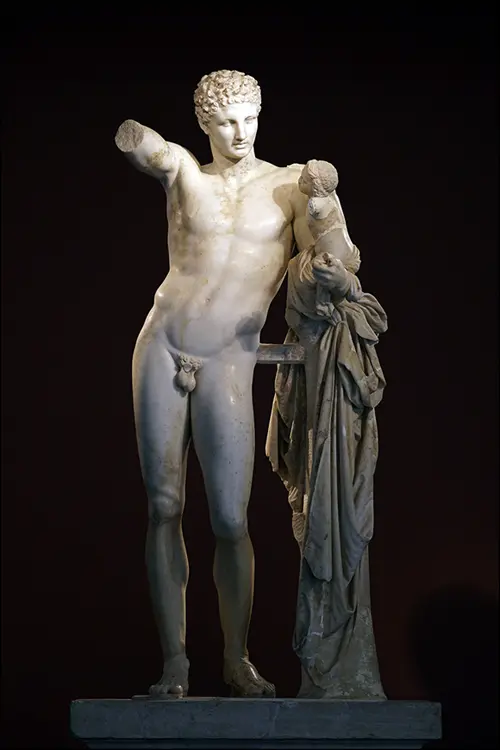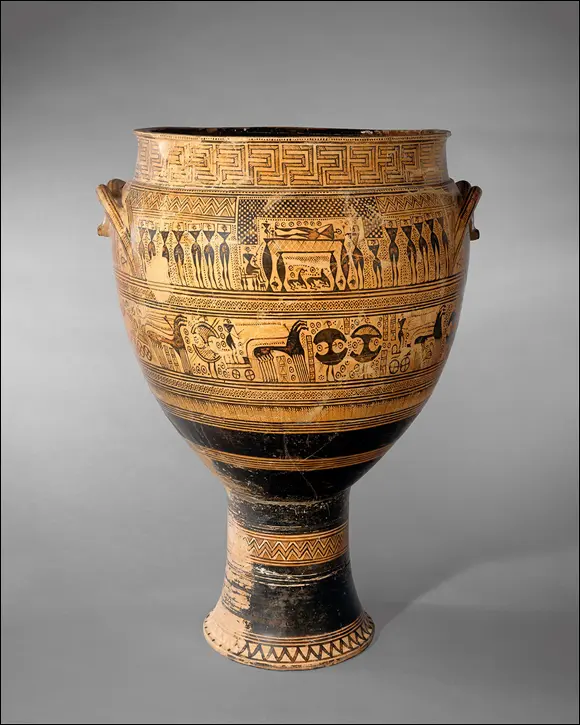Jesse Bryant Wilder - Art History For Dummies
Здесь есть возможность читать онлайн «Jesse Bryant Wilder - Art History For Dummies» — ознакомительный отрывок электронной книги совершенно бесплатно, а после прочтения отрывка купить полную версию. В некоторых случаях можно слушать аудио, скачать через торрент в формате fb2 и присутствует краткое содержание. Жанр: unrecognised, на английском языке. Описание произведения, (предисловие) а так же отзывы посетителей доступны на портале библиотеки ЛибКат.
- Название:Art History For Dummies
- Автор:
- Жанр:
- Год:неизвестен
- ISBN:нет данных
- Рейтинг книги:3 / 5. Голосов: 1
-
Избранное:Добавить в избранное
- Отзывы:
-
Ваша оценка:
- 60
- 1
- 2
- 3
- 4
- 5
Art History For Dummies: краткое содержание, описание и аннотация
Предлагаем к чтению аннотацию, описание, краткое содержание или предисловие (зависит от того, что написал сам автор книги «Art History For Dummies»). Если вы не нашли необходимую информацию о книге — напишите в комментариях, мы постараемся отыскать её.
Art History For Dummies
Art History For Dummies
Art History For Dummies
Art History For Dummies — читать онлайн ознакомительный отрывок
Ниже представлен текст книги, разбитый по страницам. Система сохранения места последней прочитанной страницы, позволяет с удобством читать онлайн бесплатно книгу «Art History For Dummies», без необходимости каждый раз заново искать на чём Вы остановились. Поставьте закладку, и сможете в любой момент перейти на страницу, на которой закончили чтение.
Интервал:
Закладка:
Fourth-century sculpture
After the fall of Athens in 404 BC, the city-state gradually got on its feet again, though it never rose to its former glory. Nevertheless, Greek philosophy peaked in the fourth century BC. (Maybe Athens’s defeat made all Athenians more philosophical.) Plato taught at his famous Athenian Academy from about 387 BC to 347 BC, and Aristotle, his greatest student, taught at the Lyceum in Athens from 335 BC to 322 BC, after educating Alexander the Great in Pella, Macedonia.
The fourth century BC also produced three great sculptors: Praxiteles, Skopas, and Lysippos (the personal sculptor of Alexander the Great). In fourth-century sculpture, the wet look got even wetter, but the timelessness associated with Phidias and Polykleitos gave way to an everyday or down-to-earth quality — less idealism, more realism. For example, Praxiteles depicts his Knidian Aphrodite preparing to take a bath, while his Hermes (see Figure 7-7) looks fondly on the playful infant Dionysus cradled in his arm.
 Fourth-century statues also often have a down-to-earth sensuality lacking in fifth-century sculpture; compare Polykleitos’s Doryphoros in Figure 7-6 to Praxiteles’s Hermes in Figure 7-7.
Fourth-century statues also often have a down-to-earth sensuality lacking in fifth-century sculpture; compare Polykleitos’s Doryphoros in Figure 7-6 to Praxiteles’s Hermes in Figure 7-7.

Jekatarinka / Shutterstock
FIGURE 7-7: Praxiteles had a knack for giving statues a soft, sensual look, as you can see in this Hellenistic or Roman copy of his Hermes and the Infant Dionysus (circa 320 BC–310 BC).
Hallmarks of Praxiteles’s style include these qualities that illustrate a turn toward realism:
Depicting natural beauty: The fourth century also produced the first free-standing female nudes. Praxiteles stripped Aphrodite, the goddess of love, to reveal all her delicate beauty and grace. Naked Aphrodite was a hit; lots of copies followed. Praxiteles was an expert at depicting delicate curves and making marble look like soft, supple flesh. The original Knidian Aphrodite, like nearly all great Greek statues, has been lost and is only known through Roman imitations and writers’ descriptions.
Paying tribute to intrinsic grace: Praxiteles’s statue of Hermes and the Infant Dionysus (refer to Figure 7-7) is nearly as famous as his Aphrodite — and just as beautiful. Notice the softness and classical serenity of the facial features and delicate grace of Hermes’s body. The Hermes, once believed to be an original, is now considered to be a superb copy, closer to the spirit of the original than the copy of Knidian Aphrodite.
Figuring Out Greek Vase Painting
Greek vase painting progressed from the primitive Geometric style (tenth through eighth centuries BC, in which people and animals look like stick figures) to the highly realistic Early Classical style in the early fifth century BC. Greece also had a brief flirtation with an Oriental style influenced by trade with Mesopotamia.
Cool stick figures: The geometric style
At first glance, the paintings on vases from the tenth through eighth centuries BC look like the stick-figure doodlings of a child. Closer inspection reveals a complex network of geometric patterns: wraparound chains of Greek frets and chevrons (similar to a sergeant’s stripes), squares, dots, and squiggly lines, along with stick figures of people and animals. Geometric vases could also tell stories. The Dipylon krater (see Figure 7-8) at the Metropolitan Museum of Art shows stick figures pulling their hair out in mourning at the funeral pyre of a Greek warrior.

Rogers Fund / The Metropolitan Museum of Art
FIGURE 7-8: The Dipylon krater, Terracotta illustrates funerary scenes and was used as a grave marker c. 750–735 BC
In the next century, the more realistic Oriental style, which made a brief appearance, allowed for clearer visual storytelling. The neck of the Oriental-style amphora (a vessel used for storing and pouring wine or olive oil) The Blinding of Polyphemus and Gorgons depicts a scene from The Odyssey, in which Odysseus and his companions burn out the eye of the giant Cyclops Polyphemus. Odysseus pulls off this stunt by first getting the one-eyed giant drunk. The wine cup in the Cyclops’s hand suggests this earlier episode.
The Mesopotamian influence is confined to the figures. Odysseus and his men look like Mesopotamians, especially the upper part of the scorpion-man in the bottom band of Puabi’s lyre (refer to Figure 5-2 in Chapter 5). The animals in the middle band and the gorgons (sisters of the snake-haired Medusa) on the belly of the vase also have a Near-Eastern flavor. But the Greeks added their own playful charm to the monsters. If you look closely, you can see that the bug-eyed gorgons show off their sexy left legs like cancan dancers.
 The belts of interlaced wavy lines (like basket weaving) at the top, bottom, and neck are leftovers from the Geometric period.
The belts of interlaced wavy lines (like basket weaving) at the top, bottom, and neck are leftovers from the Geometric period.
Black-figure and red-figure techniques
The Oriental style gave way in the sixth century BC to the even more realistic Archaic style. Archaic-style painters employed one of two techniques, either the black-figure technique, which began in the early seventh century BC, or the red-figure technique, which was invented around 530 BC.
Black-figure vase painting used this technique:
The artist first sketched his figures with a lead or charcoal stick on the red clay vase, and then filled in the figures with slip (a wet clay mixture). When fired, the slip turned black, and the unpainted part of the vase remained red.
Artists often added details with purple or red dyed slip, as in the scene of Hercules slaying the Nemean Lion on the amphora (wine-storing vessel) in Figure 7-9. The shield and dress of Athena — here the divine helpmate of Hercules — illustrates the addition of reddish slip. Note: The guy behind Hercules is his nephew Iolaos, ready with a club in case the lion gives Hercules too rough a time.
Gradually, black figure was replaced by a reverse process known as the red-figure technique, which allowed the artist to create more detailed renderings of figures. In the red-figure technique, the artist
Sketched the figures, and then incised a -inch border around them.
Painted in details with slip (historians aren’t sure how — probably with a fine-haired brush or sharp tool).
Painted the background with slip (which blackened in the kiln) right up to the incised border around the figure.

Andrew R. and Martha Holden Jennings Fund / Cleveland Museum of Art
FIGURE 7-9: The goddess Athena watches Hercules tangle with the Nemean Lion (the first of his 12 labors) on this black-figure amphora, attributed to the Berlin Painter. c. 515–510 BC.
MEDEA GETS AWAY
The Medea krater, which was painted about 30 years after Euripides’ famous tragedy Medea premiered in Athens, depicts the play’s climax: Medea has just murdered her sons to get revenge on her unfaithful husband, Jason (of Jason and the Argonauts fame). With sword raised, she makes her getaway in a dragon-drawn chariot, a loan from her grandfather Helios, the god of the sun. The defeated Jason looks up helplessly at her, his weapon dangling uselessly at his side. The winged women flanking Medea, the daughters of the night, will fight for him. They are furies whose job is to avenge within-the-family murders. But they’ll have a tough time getting past the sunburst of Helios.
Читать дальшеИнтервал:
Закладка:
Похожие книги на «Art History For Dummies»
Представляем Вашему вниманию похожие книги на «Art History For Dummies» списком для выбора. Мы отобрали схожую по названию и смыслу литературу в надежде предоставить читателям больше вариантов отыскать новые, интересные, ещё непрочитанные произведения.
Обсуждение, отзывы о книге «Art History For Dummies» и просто собственные мнения читателей. Оставьте ваши комментарии, напишите, что Вы думаете о произведении, его смысле или главных героях. Укажите что конкретно понравилось, а что нет, и почему Вы так считаете.












